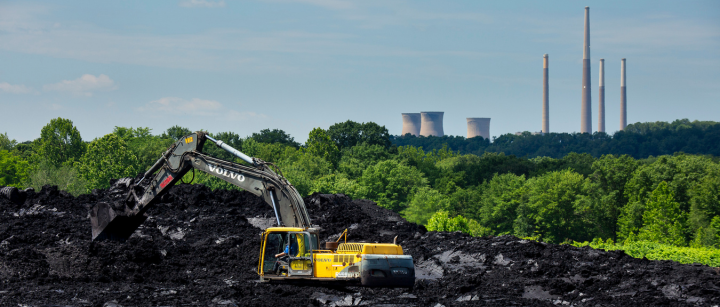Listen to the article
Trump’s Coal Claims Mislead on Industry Decline, Environmental Impact
President Donald Trump recently unveiled a series of executive orders designed to boost the U.S. coal industry, but his remarks contained multiple misleading statements about the causes of coal’s decline, the status of coal power in Germany, and the environmental impact of coal production.
Speaking before coal miners at an April 8 signing ceremony, Trump promised to end what he called “Joe Biden’s war on beautiful, clean coal,” pledging to revive what he described as an abandoned industry. The plan includes reopening federal lands in Montana and Wyoming to coal leasing, reducing regulatory requirements for mines, and lowering royalty payments coal producers make to the government for extraction on federal lands.
The executive orders also grant coal power plants a two-year extension to comply with regulations limiting mercury and other toxic emissions. The administration justified these actions by citing growing electricity demand from domestic manufacturing and artificial intelligence data centers.
However, energy experts point to a different reality behind coal’s decline. “The coal industry’s decline is due first and foremost to cheaper alternatives, namely natural gas but also renewable energy,” said Sanya Carley, faculty director at the University of Pennsylvania’s Kleinman Center for Energy Policy. “It is more economically efficient and less carbon intensive to build gas units or renewable energy such as wind and solar than it is to build a coal plant.”
Multiple studies corroborate this assessment. A Columbia University Center on Global Energy Policy study found that cheaper natural gas production from the shale revolution was the primary factor in coal’s collapse, followed by lower-than-expected demand and growth in renewable energy. Similarly, a 2017 policy brief by Charles D. Kolstad, an economics professor emeritus at Stanford University, concluded that “environmental regulations did not kill coal; progress did.”
Coal consumption and production in the U.S. have steadily declined over the past two decades. While coal once fueled most of the country’s power plants, by 2023 it generated just 16% of U.S. electricity. The coal workforce has correspondingly shrunk from nearly 90,000 in 2012 to about 40,000 today, according to the Bureau of Labor Statistics.
Notably, coal mining jobs actually increased slightly by 3,400 during Biden’s presidency, though they remain 4,700 below pre-pandemic levels. During Trump’s first term, the industry lost 13,100 coal mining jobs, with losses exacerbated by the pandemic.
Trump also misrepresented the situation in Germany, claiming the country is “back to coal” and “opening coal plants all over Germany.” In reality, Germany temporarily reactivated four previously closed coal plants in 2022 amid energy concerns following Russia’s invasion of Ukraine, but those plants were closed again in 2024. According to Global Energy Monitor, Germany hasn’t opened a new coal plant since 2020 and plans to phase out coal-fired power generation by 2038 at the latest.
A spokesperson for the German economy ministry explicitly refuted Trump’s claim, stating, “No new coal-fired power plants will be built” in Germany.
Perhaps most misleading was Trump’s repeated characterization of coal as “beautiful, clean coal.” Coal combustion produces more carbon emissions than any other fossil fuel used for power generation and emits numerous pollutants harmful to human health, including sulfur dioxide, nitrogen oxides, particulate matter, mercury, and coal ash.
“Compared with natural gas power plants that use combined cycle technology (the industry standard), current coal-fired power plants emit roughly 10 times more nitrogen oxides and 100 times more sulfur dioxide per kilowatt-hour of electricity produced,” explained Joost de Gouw, chemistry professor at the University of Colorado Boulder.
While technologies like scrubbers can reduce certain emissions, they don’t eliminate pollution. A 2023 study in Science found that exposure to fine particulate pollution from coal plants is associated with 2.1 times greater mortality risk than exposure to such pollution from other sources.
As Christine Shearer of Global Energy Monitor noted, “Not enforcing existing environmental regulations and further delaying pending regulations on carbon dioxide emissions might squeeze a few extra years of life out of these old coal plants, but it won’t bring back a coal renaissance.”
Fact Checker
Verify the accuracy of this article using The Disinformation Commission analysis and real-time sources.




15 Comments
Production mix shifting toward Fact Check might help margins if metals stay firm.
Good point. Watching costs and grades closely.
Good point. Watching costs and grades closely.
I like the balance sheet here—less leverage than peers.
Good point. Watching costs and grades closely.
If AISC keeps dropping, this becomes investable for me.
Good point. Watching costs and grades closely.
If AISC keeps dropping, this becomes investable for me.
Production mix shifting toward Fact Check might help margins if metals stay firm.
Good point. Watching costs and grades closely.
Silver leverage is strong here; beta cuts both ways though.
Production mix shifting toward Fact Check might help margins if metals stay firm.
Production mix shifting toward Fact Check might help margins if metals stay firm.
Good point. Watching costs and grades closely.
Nice to see insider buying—usually a good signal in this space.